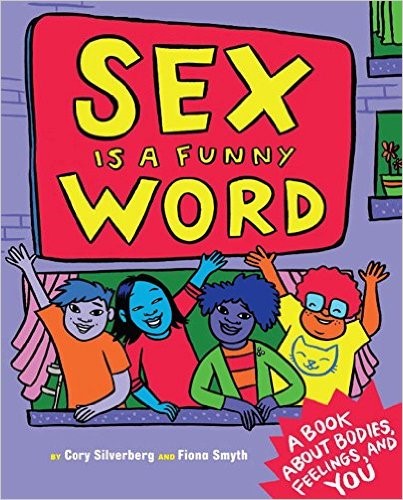Challenging Male Gender Stereotypes With Jason Rogers
This video focuses on male gender role stereotypes and how they can limit boys’ experiences and expression. Featured in the video is an animated version of fencer Jason Rogers who intervenes in conversations where boys are feeling pressured to adhere to male gender role stereotypes. Jason shares how male gender stereotypes can prevent boys from expressing their true selves and experiencing a range of human emotions. The video encourages boys to be their best selves and not to feel limited by gender role stereotypes. [AMZ-111]
Youth
Do you ever feel like you are expected to act a certain way because you are a girl or a boy? There have traditionally been clear and sometimes unfair roles for boys/men and girls/women. For example, if you were a boy, maybe you were told not to cry and expected to be strong and athletic. If you were a girl, you may have been told you should be nice or be good at things like cooking and cleaning. These rules about how boys/men and girls/women should act are gender role stereotypes. While some girls might like to care for people or some boys might like sports, gender role stereotypes can prevent people from doing those things they enjoy. What if you’re a girl who loves sports or a boy who feels emotional and cries sometimes?
People have occasionally felt pressure to act or look a certain way based on their gender. This pressure can make people unhappy, if they are being asked to be or act in a way that does not match who they really are. Today people have more freedom than ever to express themselves in ways that feel true to who they are, regardless of their gender.
FAQs
Yes, there are totally more than two genders! Some people identify as a gender that is not male or female, some identify as more than one gender, and some people don’t identify as any gender.
It’s okay if you can’t identify a person’s gender when you first meet. It’s more important not to judge someone based on the gender that person uses to identify themselves.
We usually assume people’s gender identity based on how they look or dress, but some people’s gender identity may not match how they look or dress. In some situations, when you’re not sure how someone identifies, it’s okay to say, “I want to be respectful of how you identify, so could you tell me which pronoun you prefer I use?” This gives the person an opportunity to tell you their pronoun (he, she or another word).
Lots of people have qualities that are associated with a different gender. If you feel like your gender identity does not fit neatly into a boy or girl category, that’s okay. You may choose to dress or style your hair in a way that matches how you feel. As you figure out what feels right for you, seeking the support of a trusted adult can be extremely helpful!
If you feel like your body does not match how you feel inside, then you should definitely talk to an adult you can trust. People who feel like their bodies do not match how they feel inside may identify as transgender or trans. You can get help figuring out how to have what you feel inside reflected on the outside with the help of trusted adults, like parents, counselors and doctors.
Parents
Gender role stereotypes are a society’s expectations about how a person should behave based on their gender. These stereotypes can vary vastly from country to country. In the United States, traditional gender roles harken back to a time when there were clear ways men were expected to behave (i.e., strong, non-emotional, competent, hypersexual, athletic and aggressive) and women were expected to behave (i.e., kind, nurturing, especially loving toward children, domestically competent and emotional).
Research has shown that adherence to strict or traditional gender roles can actually be harmful as children learn from an early age that girls are supposed to hide their intelligence so they don’t intimidate boys or boys are supposed to hide their vulnerability. These strict traditional gender roles do girls/women and boys/men a disservice. Girls are dehumanized by sexual objectification, which allows for the easy justification of violence against girls and women. Additionally, strict gender role stereotypes also limit and harm men by denying their ability to be empathetic, nurturing or vulnerable.
Gender role stereotypes not only inform how people should behave, but also what they should look like. Expectations about looks or standards of beauty for men/boys and women/girls are perpetuated in popular media, such as TV, movies, internet, magazines, etc. People, including youth, go to great lengths to change their bodies to conform to these unrealistic ideals via dieting, plastic surgery, obsessive exercise, etc.
As times have changed, so too have gender roles, freeing people to behave in ways that are authentic to who they are, instead of based solely on their gender. Parents can support their children by allowing them to express their gender in ways that feel right for them. Parents can also support sex education programs in schools that address gender and power. A review of effective sexuality education programs revealed that sex education programs that address gender and power are more effective than those that don’t.
CONVERSATION STARTERS
We all live in a gendered world, and most young people have been getting messages about gender roles since the moment they were born and swaddled in a pink or blue blanket. It is important that young people’s particular expression of their gender identity not be forced to align with gender roles that may not match who they are. These conversation starters are ways to make sure your child feels comfortable asking questions and talking with you about gender roles and stereotypes.
While there are many stereotypical images of masculinity on TV and social media, there are a growing number of images that push against them, showing men with a larger range of emotional intelligence. When coming across a character that displays healthy expressions of masculinity, use those moments to ask questions or affirm these images for your children.
Educators
Gender role stereotypes are everywhere in our society. These messages begin very early and can be seen in gender-reveal parties, how parents and caregivers decorate children’s room, and what toys are offered for children to play with. Advertisements, video games, movies, TV, certain cultural and/or religious norms, and some families’ value systems can also send messages about gender, starting from a very early age. These are some of the societal messages that boys may get about masculinity: anger is the only appropriate emotion for boys and men to express; boys and men should always be thinking about pursuing and dominating others, to get sex if necessary; physical violence is power; and “real men” control others.
When boys get the message that feelings of sadness or fear are not okay to express, they feel like they should “suck it up.” As boys get older, this often turns into messages to “man up” or “be a man,” so that the only acceptable emotions are anger and aggression leading them to believe that “toughing it out” is what they are expected to do, even if experiencing physical pain or injury. Boys who feel angry about a situation involving a friend or family member are often taught that the preferred way to show anger is through physical violence. These messages are repeated in popular TV shows and movies, in the personal lives of celebrities and professional athletes and in schools and communities across the country. These messages can put unnecessary pressure on adolescents and can lead to harmful outcomes for boys now and well into adulthood.
Strict male gender role stereotypes may also teach boys and men that they should be hypersexual (pursue sex at every chance), so they are never perceived as gay, since being gay is perceived as the least masculine identity one can hold. Boys and men are encouraged to be aggressive in their sexual pursuits and to see sexual partners as conquests that need to be dominated. This idea is rooted in sexism and homophobia, as sex with women is seen as a way to “prove” boys and men are heterosexual. Feeling pressure to be hypersexual can also prevent boys from making informed decisions as to when and with whom they want to have sex, as they are receiving cultural messages that they should want sex with any girl at any time.
Strict male gender role stereotypes also place pressure on boys and men to be hyper-competitive and perform based on expectations of how a man is supposed to compete, act and win. Hyper-competitiveness can include wanting to dominate the competition in order to appear to be the biggest, strongest and most aggressive. This aggression can often lead to violence and attempts to humiliate opponents and prevent expressions of empathy.
Many of these male gender role stereotypes are assumed to be biologically determined: boys and men can’t help being hypersexual, hypercompetitive, suppressing emotion and turning to violence because that’s “just the way they’re wired.” The reality is that culture has a much bigger impact on our ideas about masculinity than anything biological, as one can see from how masculinity is understood in other countries. When boys and men can recognize and understand these harmful cultural messages, they are better equipped to express themselves based on who they are, not the way they think they should be. Masculinity itself is not inherently flawed; it’s just important to make room for the different types of masculinity.
Discussion Questions
- According to the video, what are some examples of gender role stereotypes that affect men and boys?
- In your opinion, are boys taught healthy ideas about what it means to be a man?
- What are some things that could happen when boys feel pressure to conform to male gender role stereotypes?
- What is one way to stand up to the pressure of male gender role stereotypes, or to support a boy who may be feeling this pressure?
National Sex Education Standards
Discuss the range of ways people express their gender and how gender-role stereotypes may limit behavior
Describe gender-role stereotypes and their potential impact on self and others



